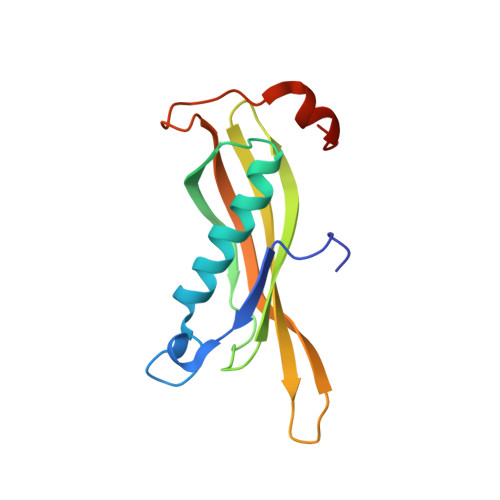Structure and function of a Campylobacter jejuni thioesterase Cj0915, a hexameric hot dog fold enzyme.
Yokoyama, T., Choi, K.J., Bosch, A.M., Yeo, H.J.(2009) Biochim Biophys Acta 1794: 1073-1081
- PubMed: 19303060
- DOI: https://doi.org/10.1016/j.bbapap.2009.03.002
- Primary Citation of Related Structures:
3D6L - PubMed Abstract:
Acyl-coenzyme A (CoA) thioesterases are a large family of enzymes that hydrolyze acyl-CoA esters to the free fatty acid and CoA and thereby regulate essential cellular functions such as lipid metabolism, membrane synthesis, signal transduction, and gene transcription. To better understand the virulence mechanisms of Campylobacter jejuni, and its possible link to membrane lipid biosynthesis, we have investigated C. jejuni thioesterases, annotated as putative proteins. While little is known about fatty acid biosynthesis and regulation in C. jejuni, remarkable differences in the genome and its organization from Escherichia coli, the paradigm system, raise questions as to the functions of these putative proteins. Here we present the crystal structure and biochemical analysis of Cj0915, defining the first functional thioesterase from C. jejuni. The structure of Cj0915 reveals the hot dog fold with an YciA-type hexameric assembly. Enzymatic assays performed with the purified protein show that Cj0915 is an efficient thioesterase with a broad specificity toward acyl-CoA substrates. This study provides a framework for investigation on roles of the Cj0915 thioesterase in virulence, and functional activities associated with the Cj0915 thioesterase in vivo.
Organizational Affiliation:
Department of Biology and Biochemistry, University of Houston, Houston, TX 77204, USA.















